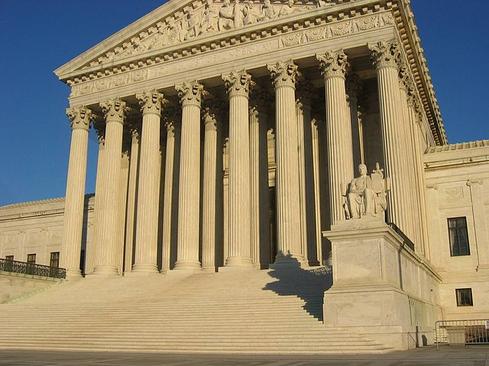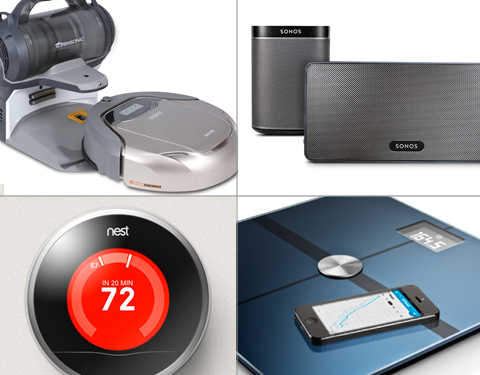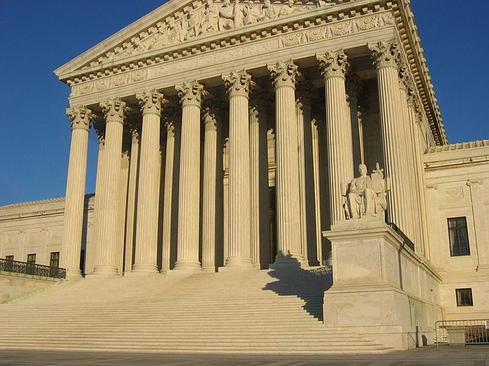Supreme Court Debates Aereo's FateSupreme Court Debates Aereo's Fate
Justices seemed to be looking for a way ban Aereo without causing collateral damage to cloud computing.


8 Gadgets For The High-Tech Home
8 Gadgets For The High-Tech Home (Click image for larger view and slideshow.)
The US Supreme Court on Tuesday heard arguments in American Broadcasting Companies v. Aereo, a case that has the potential to shape the contours of lawful innovation in digital content and cloud computing for years to come. The case pits online TV service Aereo against the television industry.
Aereo allows subscribers to view broadcast TV content through an Internet-connected device, or to store such content for later viewing. The service acts like a cloud-hosted digital video recorder, ruled lawful by an appellate court in the 2008 Cablevision decision, except that it acquires the broadcast TV signal via individual antennas, one for each subscriber.
If Aereo simply rebroadcast TV, it would create a "public performance," which is not allowed under the Copyright Act. But by capturing the broadcast TV signal on behalf of each subscriber through his or her own micro-antenna, the company claims that it is merely providing equipment for each subscriber to receive, record, and time-shift TV lawfully and privately, like other hosted DVR services.
Aereo in short argues that its technology allows massively parallel "private performances," which are allowed under Copyright Law. Broadcasters, who are obligated to provide content for free over public airwaves but collect retransmission fees from cable providers, see Aereo simply as an attempt to bypass copyright law and to avoid paying them.
[Learn why technology, not lawyers, may be your best defense against piracy. See Fight Software Piracy With SaaS.]
The Supreme Court justices who spoke during arguments sounded skeptical of Aereo's position.
"I'm just saying your technological model is based solely on circumventing legal prohibitions that you don't want to comply with, which is fine," said Chief Justice John Roberts to David Frederick, Aereo's attorney. "I mean, that's, you know, lawyers do that." Roberts was asking whether Frederick could provide a rationale for Aereo's decision to employ thousands of antennas other than to avoid liability under the Copyright Act.
Frederick's answer suggested that Aereo is doing what everyone in the cloud computing industry does: providing equipment to process data on behalf of customers. The plaintiff's contention, he said, "that we're somehow a content provider would mean that everybody who provides an antenna or a DVR is somehow a content provider. And if that's true, then the implications for the equipment industry are obviously quite massive and you can understand why that would frighten the cloud computing industry because that turns them into public performers whenever they are handling content."
Figure 1:  US Supreme Court
US Supreme Court
(Image: Duncan Lock via Wikipedia Commons)
At the same time, several justices expressed concern that ruling against Aereo could doom the cloud computing industry. Justice Sonia Sotomayor worried that ruling against Aereo might outlaw services like Dropbox and iCloud. "How do I define [a public performance] so that someone who sells coaxial cable to a resident of a building is not swept up as a participant in this?" she asked.
When Justice Elena Kagan asked Malcolm Stewart, deputy solicitor general at the Justice Department, to explain how the argument from the broadcasters' attorney did not imperil cloud computing, Stewart at first suggested the distinction came down to a service that provided new content to users -- Aereo -- and a service that provided access to content the consumers already had. Yet upon further questioning, Stewart acknowledged the distinction isn't always obvious.
"I don't pretend that there is a bright line between providing a service and providing access to equipment," said Stewart.
The problem facing the Supreme Court is that it's not entirely clear what constitutes a public performance in an era when online services
blur geographic boundaries between public and private space and when software blurs the distinction between individual action and the action of an agent doing the individual's bidding. Is the consumer acting through Aereo's equipment or is Aereo responsible?
As Justice Kagan observed, "If Aereo has the hardware in its warehouse as opposed to Aereo selling the hardware to the particular end user, that is going to make all the difference in the world as to whether we have a public performance or not a public performance."
Aereo claims, and the Second Circuit Court agreed, that the performance it transmits is private, like Cablevision's cloud-based DVR. But Cablevision argues otherwise, characterizing Aereo's mini-antennas as an intermediate step in a public performance. What's more, the firm argues, Aereo's subscribers "have no fair use right to make copies merely so they can receive programming over an unlicensed television delivery service."
In a phone interview, Bruce Ewing, a partner in the New York office of Dorsey & Whitney, says he found it unusual that the core legal issue -- the definition of a public performance with regard to the Copyright Act -- wasn't adequately addressed by any of the justices. The legal issue, Ewing says, has been superseded by practical concerns about the consequences to technological innovation and the cloud computing industry if Aereo's approach is found unlawful.
"I think there is a struggle going on among those who spoke... the tone of their questions suggested they are not fond of Aereo's system," he says. "That's clearly not good for Aereo. On the other hand, they don't want to issue a ruling that stifles innovation or would give rise of other lawsuits." He says he doubts that the Supreme Court will overturn the 2008 Cablevision ruling. He also says that he expects the Court will rule against Aereo in the narrowest possible way.
That would minimize the collateral damage to the cloud-computing industry, but it would shirk the more difficult task of reconciling today's technology with the more limited possibilities contemplated by the 1976 Copyright Act.
Mobile, cloud, and BYOD blur the lines between work and home, forcing IT to envision a new identity and access management strategy. Also in the The Future Of Identity issue of information: Threats to smart grids are far worse than generally believed, but tools and resources are available to protect them. (Free registration required.)
About the Author
You May Also Like






